Are you new to the world of electric bikes and feeling overwhelmed by the options? Fear not! In this comprehensive guide, we will walk you through the process of choosing the perfect electric bike that suits your needs, preferences, and riding style.
Electric bikes, also known as e-bikes, have gained immense popularity due to their numerous benefits for cyclists. From commuting to fitness to adventure, electric bikes offer a new level of convenience, efficiency, and enjoyment.
So, let’s delve into the world of electric bikes and discover how to select the ideal one for you.
Understanding Electric Bikes

Before diving into the selection process, it’s essential to have a basic understanding of electric bikes and the various types available in the market. Electric bikes are bicycles equipped with an electric motor and a battery that assists the rider’s pedaling.
They come in different types, including road e-bikes, city e-bikes, mountain e-bikes, folding e-bikes, and more. City e-bikes are designed for urban commuting, often featuring a comfortable upright riding position and integrated accessories like fenders and racks. Mountain e-bikes are built to tackle off-road trails with robust frames, wide tires, and powerful motors. Folding e-bikes are compact and portable, ideal for users who need to store or transport their bikes easily.
Determining Your Riding Needs and Style
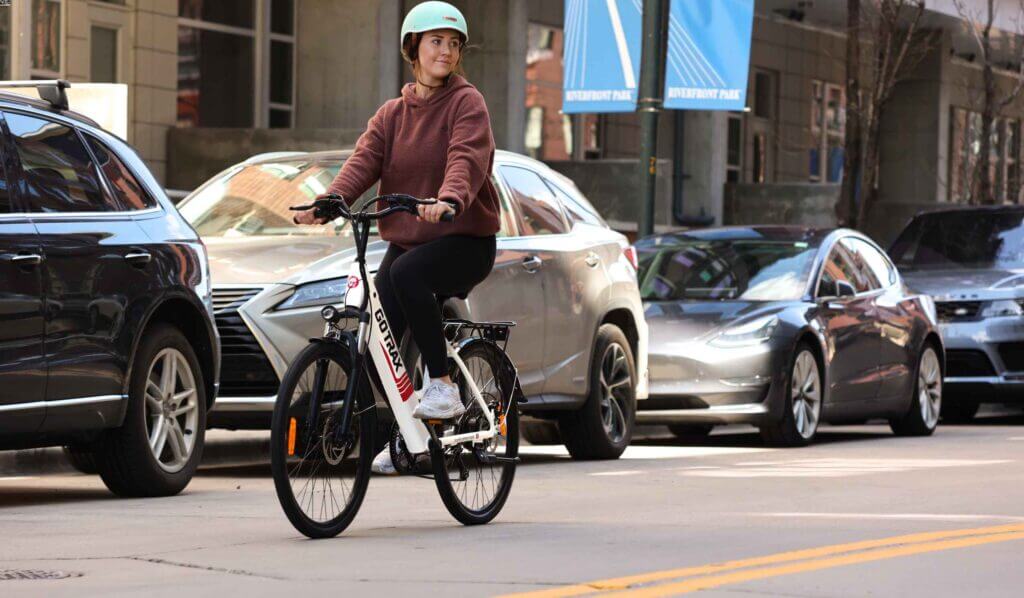
To ensure you choose an electric bike that perfectly matches your requirements, it’s crucial to evaluate your riding needs and style. Consider your riding goals, such as commuting, recreational riding, off-road adventures, or road cycling.
If you plan to use the e-bike primarily for commuting, a city e-bike with a step-through frame and a reliable motor for urban traffic conditions may be the best choice. If you’re an avid mountain biker, a mountain e-bike with full suspension, powerful motor, and durable components can handle challenging trails with ease.
For those seeking versatility, a hybrid e-bike combines the agility of a road bike with the comfort of a city bike, making it suitable for various terrains.
If you’re specifically interested in road cycling, you’ll want to focus on road e-bikes designed for speed, efficiency, and long-distance rides. For road cycling enthusiasts, a road e-bike with a lightweight frame, aerodynamic design, and efficient components is essential.
E-Bike Key Features and Components
Motor Systems
The motor system is the heart of an electric bike, significantly impacting its performance and ride quality. There are two main types of motors: hub motors and mid-drive motors.
Hub motors are located in either the front or rear wheel, providing direct power assistance. They are generally quieter and require less maintenance but may affect the bike’s balance due to the weight distribution.
Mid-drive motors are positioned near the bike’s bottom bracket, resulting in a more balanced weight distribution and better handling. They provide a more natural riding experience, especially on challenging terrain.
Consider the power and torque of the motor to ensure it matches your riding requirements. Higher power motors provide better acceleration and performance on steep hills.
Battery and Range
The battery is a crucial component that determines how far and how long you can ride on your electric bike. Lithium-ion and lithium-polymer batteries are the most common types, offering high energy density and longer lifespan.
Lithium-ion batteries are lightweight and have a higher energy capacity, making them ideal for electric bikes. Battery capacity is measured in watt-hours (Wh), and a higher capacity generally means a longer range. However, several factors can affect the battery range, including terrain, riding style, weight, and assistance level.
For example, if you frequently ride on hilly terrain or use the highest assistance level, the battery range may be shorter. Consider these factors to ensure the battery meets your desired range expectations.
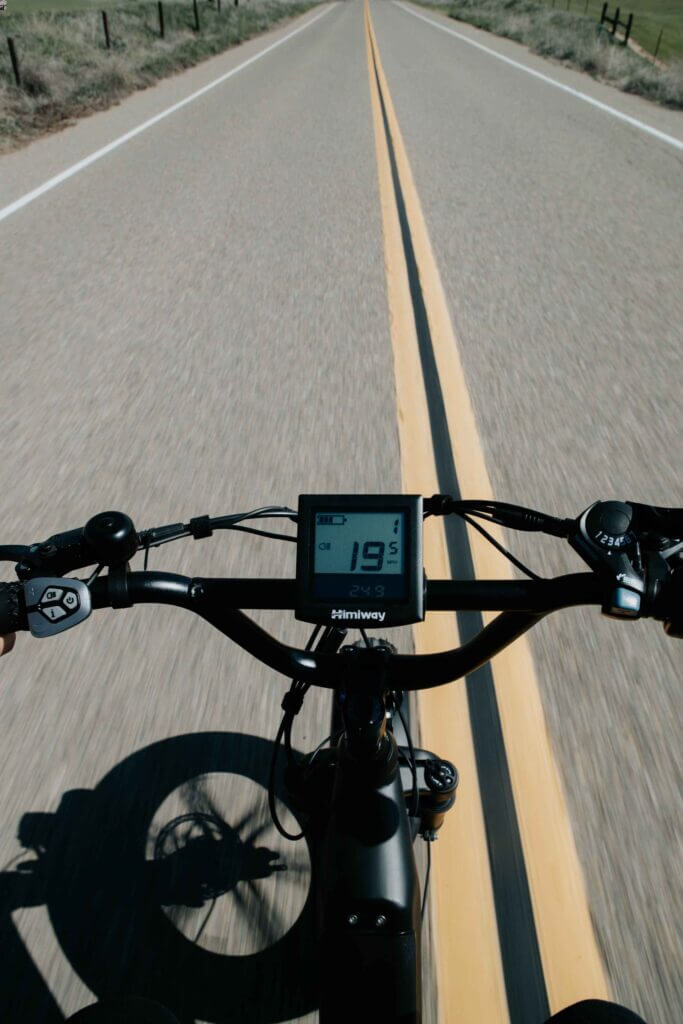
Frame Design and Construction
The frame of an electric bike plays a vital role in its overall performance and comfort. Common frame materials include aluminum, carbon fiber, and steel. Aluminum frames are lightweight, sturdy, and corrosion-resistant, offering a good balance of performance and affordability.
Carbon fiber frames are even lighter and provide excellent shock absorption, resulting in a smoother ride. They are favored by enthusiasts seeking high-performance e-bikes.
Steel frames offer a comfortable ride due to their inherent flexibility and shock-absorbing properties. However, they tend to be heavier than aluminum or carbon fiber frames. Additionally, consider the frame geometry, as it affects the bike’s stability, handling, and riding position. Test ride different frame designs to find the one that suits you best.
Brakes and Suspension
To ensure your safety and riding comfort, carefully evaluate the brake and suspension components of an electric bike. Disc brakes are commonly used in e-bikes, providing reliable stopping power in various weather conditions.
They offer superior performance and require less maintenance compared to traditional rim brakes. Hydraulic disc brakes provide smoother and more precise braking than mechanical disc brakes.
When it comes to suspension, consider your riding style and terrain. Front suspension, also known as a suspension fork, provides enhanced comfort and control on uneven surfaces.
Full suspension, with both front and rear suspension systems, offers improved performance and stability on challenging trails with bumps and obstacles. If you primarily ride on smooth roads or bike paths, a rigid frame without suspension may be suitable.
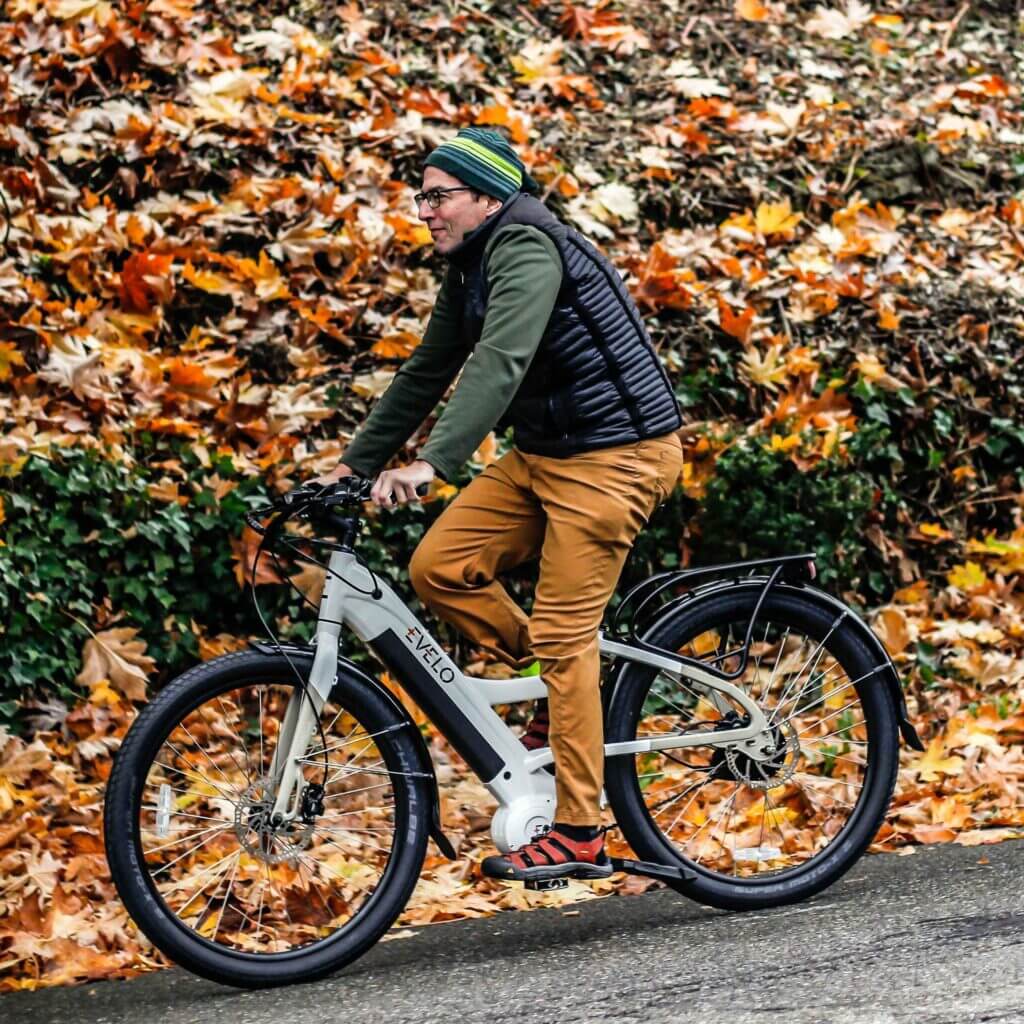
Testing and Comparing Electric Bikes
Now that you have a good understanding of the key features, it’s time to get hands-on experience and gather real-world feedback. Visiting local bike shops that offer electric bikes and taking advantage of their test ride opportunities is invaluable.
Test different models, paying attention to how the bike feels, handles, and responds to your inputs. Assess the motor’s responsiveness, the smoothness of the assistance, and the overall comfort of the ride. Consider factors like ergonomics, saddle comfort, and ease of operation.
Reading reviews and user experiences can also provide valuable insights into the performance and reliability of different electric bike models. Look for unbiased reviews from reputable sources and online forums to gather a variety of perspectives.
Budget Considerations
While choosing an electric bike, it’s important to find the right balance between your budget and the features you desire. Set a realistic budget range and explore the options available within that range. Remember that higher-priced electric bikes often come with better components, advanced features, and longer warranties.
However, there are still affordable e-bikes available that offer good value for money. Consider the long-term benefits and cost savings that an electric bike can provide in terms of transportation, fitness, and environmental impact.
Calculate the potential fuel savings or public transportation costs you could avoid by using an e-bike regularly. Investing in a higher-quality electric bike upfront can offer better performance, durability, and overall satisfaction.
The prices of electric bikes can vary depending on factors such as brand, motor power, battery capacity, and additional features. On average, electric bikes can range from $800 to $3,000 (or €700 to €2,500) for entry-level models with basic specifications.
Mid-range e-bikes with better components and features typically range from $3,000 to $6,000 (or €2,500 to €5,000). High-end electric bikes, often featuring premium components, advanced technologies, and superior performance, can range from $6,000 to $12,000 (or €5,000 to €10,000) and above.
Additional Factors to Consider
Before making your final decision, take these additional factors into account to ensure a satisfactory long-term ownership experience. Check the warranty and after-sales service provided by the manufacturer or retailer. A good warranty can offer peace of mind and protect your investment.
Look for brands that provide reliable customer support, ensuring that any technical issues or concerns can be addressed promptly. Research the brand reputation by reading reviews and assessing their history in the electric bike industry. A reputable brand tends to have better quality control and customer assistance.
Look for online forums and communities where you can connect with other electric bike owners and gather their insights and experiences. Hearing firsthand experiences can provide valuable information about the durability, reliability, and overall satisfaction of different electric bike models.
Recommended Road E-Bikes for Beginners:
Ribble Endurance SL E
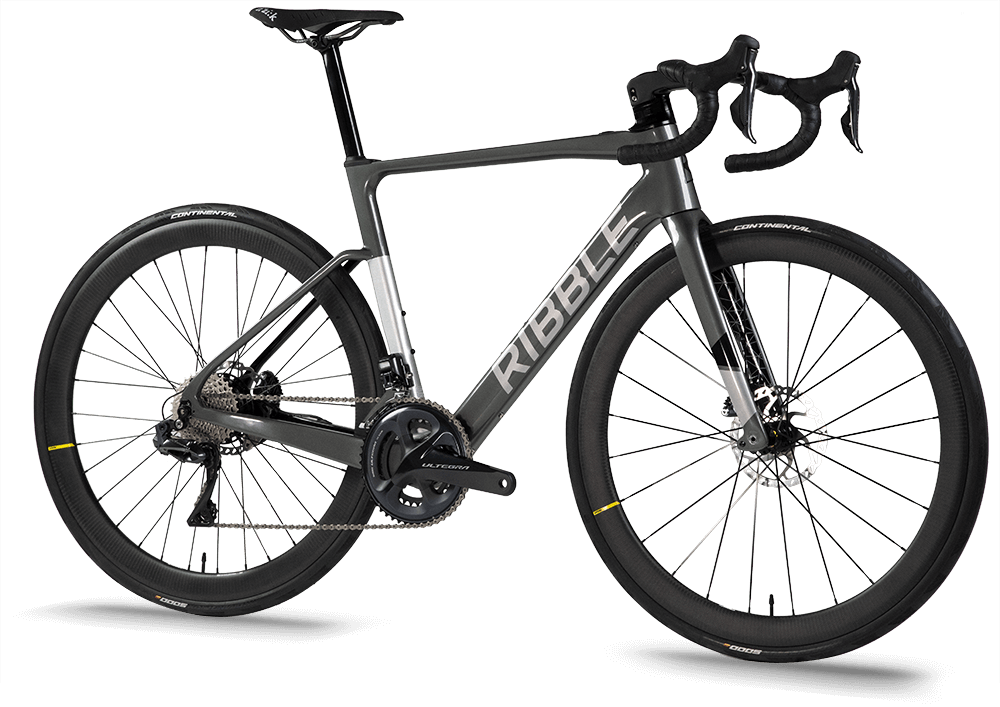
Ribble Endurance SL E (Image credit: Ribble)
Typical Price Range: $3,000 to $5,000 (or €2,500 to €4,200)
Motor: MAHLE Ebikemotion X35 M5 250W
Battery: Panasonic 36V/250Wh
Weight: Approximately 26.26 lbs (11.94 kg)
The Ribble Endurance SL E is a high-quality road e-bike designed for endurance and performance. With a lightweight carbon frame, a powerful motor, and a Panasonic 36V/250Wh battery, the Endurance SL E offers an optimal balance of comfort and speed. Its sleek design, reliable components, and versatile capabilities make it an excellent choice for beginners looking to take their road cycling to the next level. The Ribble Endurance SL E falls within a competitive price range, providing great value for the features and performance it offers.
Cannondale Synapse NEO SE

Typical Price Range: $4,000 to $5,000 (or €3,500 to €4,200)
Motor: Bosch Active Line Plus 250W motor
Battery: Bosch PowerTube 500Wh
Weight: Approximately 40.92 lbs (18.6 kg)
The Cannondale Synapse NEO SE is a versatile and endurance-focused road e-bike suitable for beginners exploring longer rides and challenging terrains. It features a comfortable geometry, a powerful motor, and a long-range Bosch PowerTube 500Wh battery. The Synapse NEO SE offers a smooth and stable ride, allowing riders to tackle various road conditions with confidence. While it falls into a higher price range, the Synapse NEO SE justifies its cost with its exceptional build quality, performance, and reliability.
Trek Domane+ AL 5
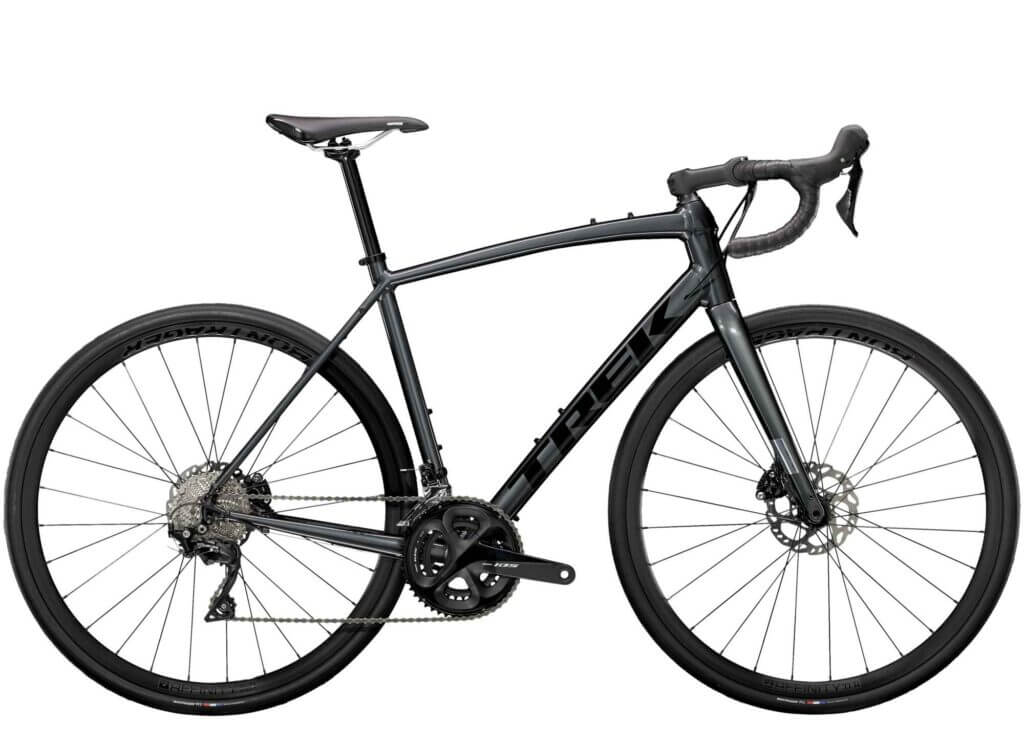
Typical Price Range: $4,000 to $5,000 (or €3,500 to €4,200)
Motor: 250W/40Nm HyDrive
Battery: 250Wh
Weight: Approximately 42 lbs (19.1 kg)
The Trek Domane+ AL 5 is a high-quality road e-bike designed for beginners seeking comfort and performance. It features a lightweight aluminum frame, a reliable motor system with a 250Wh battery integrated into the downtube, and Shimano 105 components including hydraulic disc brakes. The Domane+ AL 5 delivers a smooth and enjoyable ride, especially on long-distance rides or challenging terrains. With its endurance-focused geometry, excellent components, and powerful braking performance, this model provides exceptional value for riders looking to explore road cycling with electric assistance.
Giant Road E+ 1 Pro
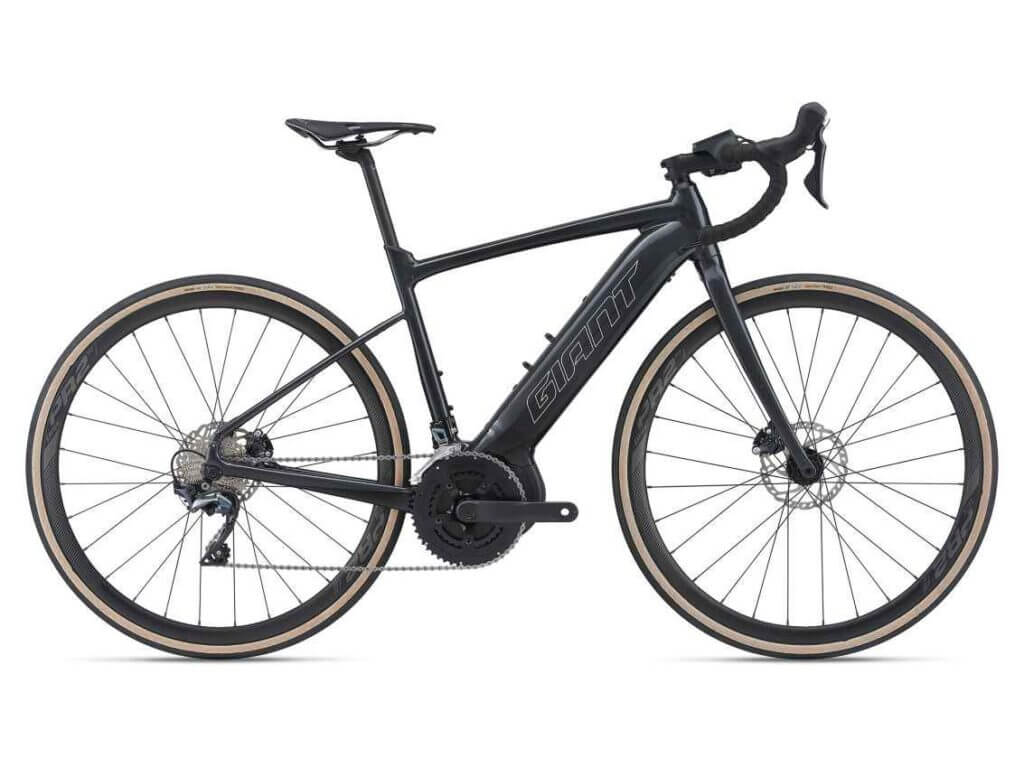
Typical Price Range: $4,000 to $5,000 (or €3,500 to €4,200)
Motor: Giant SyncDrive Pro 250W 80Nm
Battery: Giant EnergyPak Smart 500Wh
Weight: Approximately 40.1 lbs (18.2 kg)
The Giant Road E+ 1 Pro is a high-performance road e-bike designed for beginners seeking an exhilarating riding experience. It features a lightweight aluminum frame, a powerful motor system with a Giant EnergyPak Smart 500Wh battery, and a Shimano Ultegra 11-speed groupset with hydraulic disc brakes.
If you’re looking for an e-road bike with a robust motor and impressive range, the Giant Road E+ 1 Pro is a fantastic choice. This model excels in delivering extended battery life compared to many other road e-bikes on the market. However, it’s important to note that the Road E+ 1 Pro is slightly heavier, weighing approximately 18.2kg in a size medium. Despite its weight, this e-bike compensates with its powerful performance and exceptional endurance capabilities.
FAQ About Electric Bikes
Is riding an electric bike still a good form of exercise?
Yes, riding an electric bike can still provide a good form of exercise. While the motor assists with pedaling, riders can still choose to pedal without assistance, adjust the level of assistance, or engage in higher-intensity workouts by selecting lower assistance levels. The e-bike allows riders to customize their exercise intensity based on their fitness goals and preferences.
How fast can electric bikes go?
Electric bikes typically have a maximum assisted speed of 20 mph (32 km/h). However, some models are designed for off-road use and may offer higher speeds. It’s important to comply with local regulations and speed limits.
How far can electric bikes travel on a single charge?
The range of an electric bike depends on various factors, including battery capacity, assistance level, terrain, and rider weight. On average, e-bikes can travel between 20 to 80 miles (32 to 128 km) on a single charge. Keep in mind that riding conditions and personal riding style also influence the range.
Do I need a license to ride an electric bike?
The regulations regarding electric bikes vary by country, state, and region. In many places, e-bikes that meet certain criteria, such as having a maximum power output and speed limit, can be ridden without a license or registration. However, it’s important to check the specific regulations in your area to ensure compliance.
How long does it take to charge an electric bike battery?
Charging times depend on the battery capacity and the charger’s power output. In general, it takes around 3 to 6 hours to fully charge an electric bike battery. Some higher-capacity batteries may take slightly longer. It’s recommended to follow the manufacturer’s guidelines for charging times and procedures.
Are electric bikes suitable for hilly terrain?
Yes, electric bikes are excellent for hilly terrain. The motor assistance helps riders tackle inclines more easily and reduces the effort required to climb hills. Electric bikes allow riders to maintain a consistent speed on uphill sections, making them a great choice for riders who live in or frequently encounter hilly areas.

